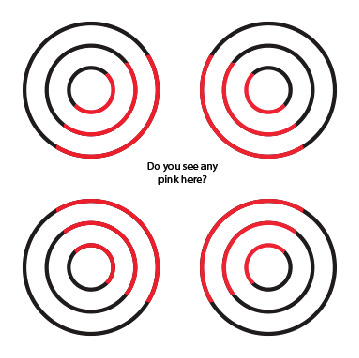The Science of Colour: it only exists in your mind
Curated, Science-Driven Insights into the Brain.
Future Minds newsletter breaks down the science of the mind and brain into short and easy-to-digest insights and actionable take-homes. Sign up and join the many others who receive it directly in their inbox.
Hello, dear readers!
Whether your interest lies in aphantasia and mental imagery, the broader realms of the mind, or the complex workings of the brain, we're excited to share that we're gearing up for some revolutionary initiatives. Here's a little teaser: we're sitting on a wealth of yet-to-be-published data, including many insightful discoveries on aphantasia. Due to various reasons, it often takes a considerable amount of time—sometimes years—for our findings to make their way from the lab to the public eye. We're on a mission to revolutionize this process by fostering a community where we can share the latest data directly with you, fresh from our researchers, even before it hits the academic press. Stay tuned for more details on this initiative.
In the meantime, we hope you enjoy today's edition!
At a glance:
Colour shapes our sensory world through our brain's interpretation of light (energy), an interesting fact is, that colour only exists in our minds, not outside in the world!
Colour perception is deeply personal and subjective, varying widely across individuals and defying direct comparison (it is not possible to directly compare my red and yours).
Colour blindness affects colour perception in various ways, from mixing shades to reducing the spectrum, influenced by genetics and environmental factors.
Colours and Aphantasia: Because colour only exists in your mind and not out in the world, unlike shapes or movement, in a sense it’s like a form of mental imagery - it’s purely internal!
Exploring the Spectrum: The Fascinating World of Colour Perception
Before we immerse ourselves in the vibrant world of colour, let's begin with a brief exercise. Stare directly at the plus symbol (+) in the centre of the image below, you will notice that the purple discs will slowly disappear. Keep staring and wait for a different colour to appear.
What colour did you see? Green? This is caused by an afterimage effect. This illusion was discovered by Jeremy Hinton around 2005.
So, what exactly is colour? Colour significantly enriches our sensory experience, emerging as the brain's interpretation of various wavelengths of electromagnetic energy. This spectrum encompasses just-visible segments like ultraviolet and some infrared light, alongside the sliver of wavelengths we recognise as colours.
Interestingly, colour does not exist physically out in the world; it's a construct of our minds. In the world, it’s just electromagnetic energy bouncing off objects and then hitting our eyes. The perception of colour is highly subjective, varying dramatically from one individual to another. This personal experience, known as "qualia," is so unique that it defies direct comparison or measurement against someone else's perception.
When it comes to how our brains process colour, our retinas play a crucial role. Equipped with cells called cones that absorb energy, which our brains then decode as the conscious experience of colour. However, this interpretation isn't uniform; it reflects the intricate nature of personal experience. Interestingly, with practice, we can refine our ability to discern colours by reshaping the neural connections in our brains, thus enhancing our colour perception. For more on how to achieve this, take a look at our "Neuro Hacks" section below.
Colour Blindness and Perception
This condition manifests in several forms, ranging from mild to severe. Often genetic and affecting males more than females, colour blindness can also result from damage to the eyes, nerves, or brain, or exposure to certain chemicals. It alters the way colours are seen, sometimes mixing up shades or diminishing the spectrum's richness. Interestingly, people often don’t realise they are colour blind until much later in life, much like with aphantasia.
It's worth noting that the phenomenon of colour perception extends beyond humans. Animals also experience colour vision to varying degrees. Some species can see a broader or narrower range of colours compared to humans, which is determined by the number and type of cones present in their eyes. For example, bees can see ultraviolet, and they often see extra patterns of flowers that we can’t see!
Involuntary colour imagery
What do you see right in the centre of the image below? Does it look like the pixels are a little pinkish?
What about this one below, do the pixels right in the centre have a bluish colour to them?
These are two versions of the Neon Colour spreading illusion, and most people report a light colour spreading into the centre a pinkish hue, even though the pixels there are all white! This is thought to happen in your visual cortex, basically because your brain thinks is more likely that there is a transparent coloured sheet laid over the middle, rather than lots of small coloured circles just happening to line up.
Involuntary colour imagery and Aphantasia?
Our unpublished research indicates a fascinating variation among individuals with aphantasia regarding their perception of colors in the Neon Spreading Illusion above. While some people with aphantasia report seeing colors, others do not. We're exploring the factors behind these differences. This phenomenon might be considered a form of involuntary imagery. So, if you observed any hint of color in the center, your brain was autonomously generating color imagery, even though it wasn't a conscious effort on your part. This suggests that you do possess some form of imagery capability.
Neuro Hacks: Craft a Better Life
Training the brain to perceive colours better is largely about enhancing the brain's ability to interpret the information it receives from the eyes. While we can't change the physical structure of our eyes—like increasing the number of cone cells, which are responsible for our colour vision—we can improve our colour discrimination through practice and the use of certain tools. This is supported by the principle of neuroplasticity, which is the brain's ability to reorganize itself by forming new neural connections throughout life. Here are some scientifically based methods to potentially enhance colour perception:
Colour Identification Practice: Regularly practising naming and matching colours can help. This might involve using colour swatches and trying to identify subtle differences between them.
Sensory Enrichment: Engaging with a variety of colours in different contexts can enhance colour recognition. Artistic activities like painting or digital design work can be particularly effective.
Technology Aids: Using technology like colour-identifying apps or augmented reality glasses can train your brain to become more aware of colours by providing immediate feedback and reinforcement.
Learning and Education: Studying colour theory can help you understand how colours relate to one another and how they can be affected by lighting and context.
Contrast Sensitivity Training: Training that focuses on distinguishing colours that are very similar, may also be beneficial.
It's important to note that these methods are more about training the brain to process and interpret colour signals more effectively, rather than physically improving the eye's ability to see colour. For individuals with colour vision deficiency, these methods can be useful for learning to spot cues and patterns that help them compensate for their condition, but they won't cure colour blindness.
Mental Meanderings
When you recall a colour do you use your mental imagery at all? For people with aphantasia, what do you experience when you recall a colour?
Can you try an explain the colour “Red” to someone without making associations like “Red is like an apple”?
What do you see right in the centre of the Neon Colour illusion?
In Case You Missed It: discover our past insights…
A great write up of my book in the Guardian:










I don't have Aphantasia, but I am fascinated about how every mind and the process of thinking can be so difference between humans. Even though I have very vivd dreams (which I will think means I have strong mental imagery) I cant see any colour in the middle of the Neon images. Also fascinating hearing about the "inner voices" I hear my inner voice, but there are no images or words attached to it. Its just a thought - I dont know how I could describe the colour Red without an association to something physical - maybe Red - its like when you feel really hot and angry.
I have total aphantasia, but I was able to see a faint light pink circle in the first neon illusion, and a very faint light blue in the second, but since I have vivid dreams I was aware that my inability to visualize only applied to my conscious mind.
I am starting to realize something else about how very different minds work. I would have said until very recently that I have an inner voice. In fact it is only in the last few years that I realized that many people can think without words. But very recently, having heard and read people describe their inner voices in terms of the way they sound, and I realized their experience of an inner voice is not the same as mine. The words in my mind exist without any sound or form. I think in english sentences, but the sentences are not represented in any form or voice or any other way that can be described outside of anything but thoughts, so I am not really sure if I have an ‘inner voice’ at least not in the same way as others